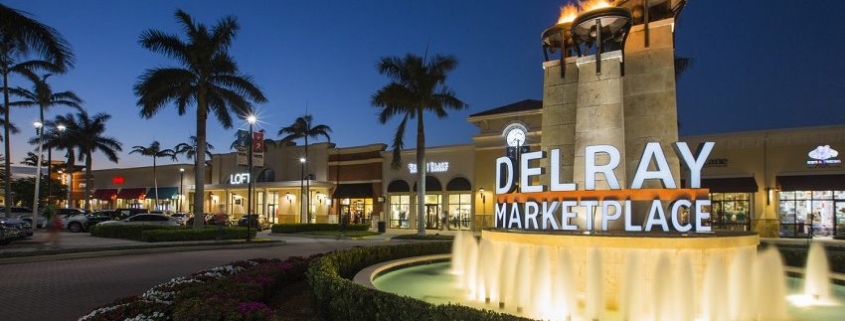Delray Marketplace Could Get Medical Office Building Despite Cap On Commercial Space — How Is That Possible?
It’s the second time in less than a month that the planning commission accommodated a builder whose project was jeopardized by rules designed to limit development in the Ag Reserve.
The County Planning Commission voted 7-6 earlier this month to initiate a change in the county’s growth plan to increase the commercial cap in the Agricultural Reserve — a move is designed to allow a 13,000-square-foot, medical office building on a narrow, two-acre lot at Delray Marketplace.
This marked the second time in less than a month that the planning commission accommodated a builder whose project was jeopardized by rules designed to limit development in the Ag Reserve. In early January, the commission voted to initiate a change to the growth plan that will consider self-storage facilities as noncommercial and, therefore, exempt self-storage from the commercial cap.
“How many more times are we going to increase the cap or make exceptions?” Planning Commissioner Dagmar Brahs asked her colleagues.
She “implored” them to vote against the project at Delray Marketplace.
“At least wait until Atlantic Avenue is widened from State Road 7 to Lyons Road,” Brahs said.
“Traffic congestion now is ridiculous,” Commissioner Spencer Siegel said. “However, approving the project was a way to force county commissioners to decide whether an in-depth review of Ag Reserve rules should be conducted.”
The planning commission vote to “initiate” the change to increase the commercial cap will be taken up by the county commission on February 5. County commissioners, if they support the planning commission, will eventually have to hold public hearings.
The lot is on Atlantic Avenue sandwiched in between the Marketplace to the east and a kennel currently under construction to the west. It is a preserve parcel, which means nothing can be built on it. So the builder found another two-acre lot in the Ag Reserve that will be preserved in exchange for allowing the property at the Marketplace to be developed.
Siegel noted that the existing preserve parcel at the Marketplace is idle land and the new preserve parcel, about a mile away, is better suited for agriculture. Other commissioners said they were frustrated at the number of preserve parcels that are not being used for agricultural purposes such as the one at the Marketplace. County planners said it should not have been approved as a preserve parcel.
To accommodate the builder, the county’s growth plan needs to be amended. Staff called the change “inappropriate” and an effort to “circumvent” the growth plan. The lot is only 33 feet wide by approximately 670 feet deep. Staff said approval triggers policy issues such as “piecemeal development.”
Jennifer Morton, the builder’s agent, told the commission that there is a need for more medical office space on Atlantic Avenue. The builder, Garret Bender of Delray Beach, has already opened a medical office complex just east of the Marketplace on Atlantic Avenue. It is fully leased, and Bender already has a physician interested in operating in his Marketplace building, according to Morton.
Morton noted that her client’s project will increase the current cap of 1,015,000 square feet by just 1.3%. The county has already increased the cap three times since 2016, adding another 94,000 square feet of commercial space during that time. When the Ag Reserve rules were written in 2002, the cap was set at 750,000 square feet. Commercial development is restricted to within a quarter-mile of either Atlantic Avenue or Boynton Beach Boulevard.
Morton said if the commissioners decided against raising the commercial cap, she proposed they get around the cap by considering the medical office building “commercial low office” and then exempt that category from being considered commercial. That option was not taken up by the planning commission.
Voting to increase the cap and allow the medical office building to be built were Siegel, Edwin Ferguson, Kiley Harper Larsen, Jim Knight, Marcia Hayden, Angella Vann and Eric Royal.
Voting against increasing the cap were Brahs, Barbara Roth, David Dinin, Lori Vinikoor, Alex Garcia, and Evan Rosenberg.
Source: Palm Beach Post








